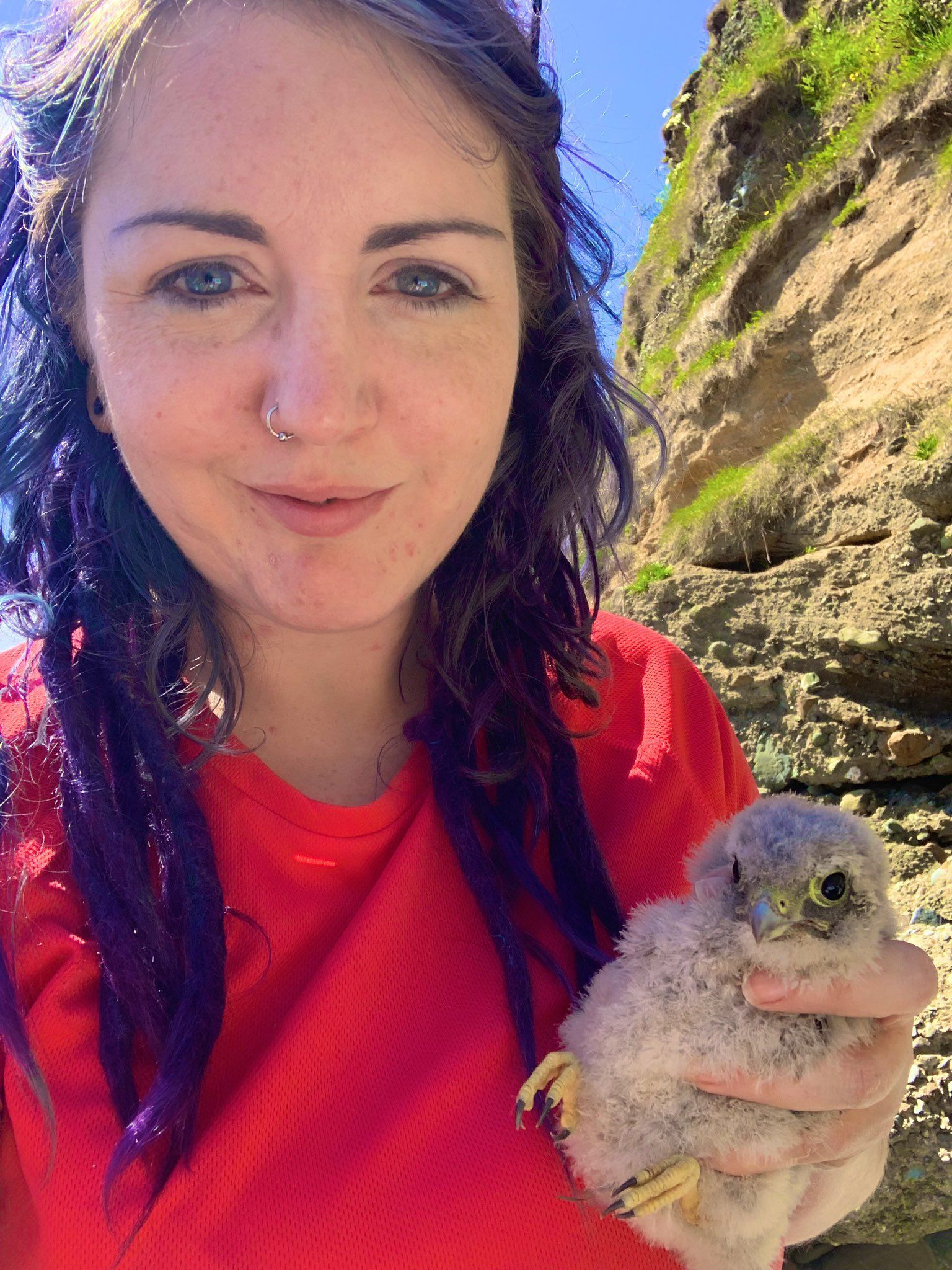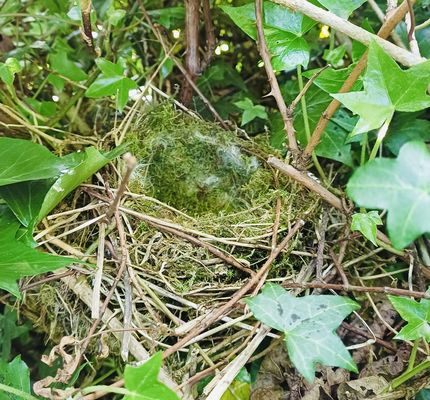THERE are plenty of people who devote their spare time to studying birdlife, but Kez Armstrong has gone one better. She’s become the first person in Ireland to be awarded a PhD for her work on one of our most loved birds: the kestrel.
The 36-year-old Belfast ecologist – who can now call herself Doctor – spent four years at Queen’s University studying the beautiful falcon, and it was a labour of love.
“The kestrel is my favourite bird – raptors were always special to me,” she told Dúlra this week. “From the data that I have collected there are probably 300 to 500 nests across the whole island.
“That’s why it was so important for me to do the PhD at the time that I did it, the kestrel and indeed the merlin as well are two completely overlooked, under-the-radar birds that we haven’t got enough information on. So to collect any information on kestrels was exceptionally important because we’re on the most westerly part of their range.”
Kez’s work meant she spent years travelling the countryside, liaising with farmers and quarry companies, where kestrels like to nest on cliff-faces. And one company in County Fermanagh organised for Kez to set up a live cam inside one of the nests which can be viewed online at www.mannokbuild.com/kestrel-cam – it was the first such camera in Ireland and you can still view the amazing footage of the birds rearing their five chicks.
“It was the first insight we got into a breeding pair in Ireland in a typical habitat,” said Kez. “It was a really intimate glance into what is going on between the pairs, the different roles the male and female had when rearing the young.
“Kestrels are unique among most raptor species because they rear their young for eight to ten weeks, a lot of other raptors will leave as soon as the young are fledged, but kestrels will carry on looking after them for several more weeks.
“We’re seeing a lot of site fidelity where the young are hanging about throughout the winter. We still don’t really know what’s happening that first year of life and that’s when we’re seeing the most mortality.”
Kestrels were a relatively common bird a few decades ago, even in inner-city Belfast – in fact, it was always our most common bird of prey. But Kez’s recent findings that there are perhaps just 300 nests across Ireland is very worrying.
Kez went on: “Whenever I talk to people of a certain age, they say the kestrel was the bird they always saw on the motorway over the road verges, probably the first bird of prey that people would learn to recognise.
“Because it was such a common bird people would say, Well, you see kestrels all the time – until the point where you didn’t. So I had a real motivation to discover the ecology of the kestrel and get some baseline information, so we know what’s happening to them now so we can monitor them for the future.”
So how does a person end up as a Doctor in Kestrels? Well, Kez knew at an early age what she wanted to do – and she owes it all to her granny who gave her the love of birds.
“My granny in the Four Winds always had bird feeders. She looked after me whenever mum and dad were working. Robins were her favourite and she really instilled a love of birds in me and I got obsessed from then.
“I always wanted to work with birds of prey, so when I started thinking about being a conservationist, I ended up being a zookeeper first. I volunteered at the World of Owls in Randalstown for a couple of years and I think it was then I really fell in love with raptors.
“Then I started working in Castle Espie in charge of the captive collection for four years – breeding the ducks and geese and swans.
“Working in the reserve and talking to people about birds all the time really inspired me to keep going with it. And then at some point I thought, I’ll see if I’m as smart as I think I am, and I applied to do a PhD.”
Her masters in animal behaviour was a great help – she studied nightingale song, looking at the differences between rural and urban nightingales and whether they were singing differently.
“I found that the birds in the city were singing at a higher frequency and a faster pitch than birds in rural areas and the hypothesis there is that if the two birds were to meet they wouldn’t recognise each other as nightingales and there might be an ecological trap with that in terms of not being able to breed.”
It was a good foundation to start her four-year study of the kestrel – pocaire gaoithe in Irish, rider of the wind. And she realised the small red falcon had been largely overlooked.
“Much of the research has gone into barn owls and hen harriers, the sexy birds of prey,” Kez said. “And whenever you think about birds of prey in Ireland the first thing you’re going to think about is the introduction programme. We’ve had red kites introduced, we’ve had eagles introduced.
“But we knew kestrels had declined from the last birds of conservat-ion concern paper a few years before I began my PhD, so we hypothes-ised that the population had dropped by 50 per cent. This was a bird that did not have any research going into it, it had no money going into it, and none of the conservation groups were working on it.”
Kez (Kerri, by the way, and Kez is an entirely coincidental school days nickname) tells me the reasons for the kestrel’s decline are hard to pinpoint.
“The common kestrel is a European-Asian bird but Ireland is an island on the very westernmost part of its range where most of its prey doesn’t exist – voles.
“We only have one species of vole which is encroaching from the south-west. So potentially diet was a problem, but I don’t think it is because they are such a generalist predator, they’re eating both mammals and birds. Rodenticides are still a problem for all our birds of prey. There was a study in America a couple of years ago and they stopped using rodenticides and started increasing the number of kestrel nestboxes, and the farmers saved $2.2 million worth of revenue because they didn’t need to use rodenticide because of the kestrels. The best thing you can do if you have agricultural land is to encourage a mammal-eating specialist on to your land.”
Kez graduates next July and her thesis has yet to be made public.
“I’m going to publish a couple of chapters, some of the ones that are most interesting, looking at ringing recoveries,” she said.
“We don’t ring that many kestrels in Ireland, which is something I’m trying to change. We’ve started a colour ringing programme which is very exciting because we’re already getting some of the sightings being reported.
“All kestrels in Ireland have a blue ring and the number on it will tell us which nest it came from.”
Ringing kestrels often entails dangling on a rope hundreds of feet up a quarry face. But again, that’s no problem for Kez.
But when Dúlra met up with Kez at Oxford Island Nature Reserve on the shores of Lough Neagh this week, there was one question he had to ask – why is Ireland’s greatest lover of kestrels wearing a gull T-shirt? “They’re my second favourite birds!” she said.
“Gulls are great, most of the gull species we have in Ireland are amber-listed endangered species, which will shock people because when you go to McDonald’s you’re going to see black-headed gulls everywhere.
“But these are species whose breeding populations are declining here. It’s mainly due to climate change where their breeding areas are disappearing. If we have sea level rise, for example, we’re going to lose a lot of those gravel shingle roosts these birds need to breed in.
“Gulls are a species that people don’t give enough credit to. I think people should look at them differently, they’re a fascinating part of the ecosystem. The fact that they annoy us by their feeding is a symptom of our own behaviour. We created this and then decided we don’t like it any more.”
Kez – who now works as an ornithologist consultant – is far from pessimistic about the future and sees a recent increase in kestrels on Divis Mountain and the Belfast Hills as a good omen.
“I’m an eternal optimist. If you look at Cop 27, there’s a lot of gloomy talk at the minute, but we have to try,” she said.
“There have been many more kestrels spotted on Divis this year, although it’s hard to get access to the nests to ring the chicks because they’re working quarries.”
But Dúlra gets the feeling that won't stop Kez scaling those cliffs.









